Tourism
The Wonderland of the World, Gilgit-Baltistan: Its Inns, Ways, and the Wayfarers
Published
3 years agoon
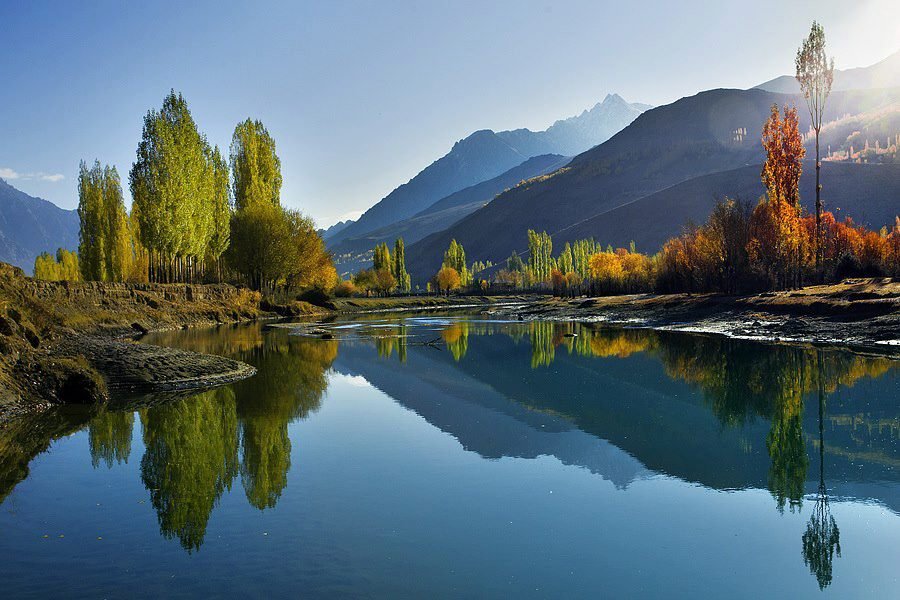
It was the 1st week of July when I first went to Phander. I can precisely locate the year, but for the exact date, I rather believe you would be kind enough to pardon me. It was, however, in 2018. Yeah, pre- Covid 19 era. Just a year before the Pandemic Phenomenon shrouded the globe steadily and swiftly, and the inhabitants of the globe just shrank to their shadows. It was just before the nightmare befell. Originally, the odyssey was undertaken to cover the Shandur Polo Festival for Radio Pakistan, Gilgit. And it was Phander in the way that made me and my team halt for a day and a night. Phander — the place, frankly I had not heard of till the day we were planning for Shandor, though I had been in Gilgit for last three years. Till then, the places to be visited, I had been told solemnly and zealously by the people around, were mostly on the sides of Karakoram Highway (KKH) starting sharply from the sharp turn leading to Rakaposhi Peak up to Khunjrab Top, i.e.; the Top marking the line of demarcation between centuries-old and time-tested friends, i.e.; China and Pakistan. The starting point of China Pakistan Economic Corridor (CPEC). In the way, on the KKH lie world’s spectacular sights that include valleys, falls, peaks, paddocks, meadows, streams, lakes, meres, tarns, and glaciers, replete with all organic flora feeding all fantastic fauna. Then, the dwellings, thinly and at places thickly populated, radiating heterogeneously homogeneous cultures, traditions, conventions, customs, and dispositions, visible, as well as invisible, become the source of satiation for the rest of the world. And, to crown them all, are the roads and ways and paths leading to and from the mighty KKH which are pretty smooth and comfortable to drive on, not if state-of-the-art combos of coal tar and gravel.

But this time, I was not on KKH. Not upstream River Hunza. This time, the head was towards Shandur, and the journey was upstream the river Gizer. And it was mesmerizing. And it was breathtaking. And it was jaw dropping. And here, let me employ yet another adjective that could best describe my sentimentalities. And it was — awe-inspiring. Literally. And here, permit me to cut the unending story short, as, if I did not bridle my rapt spontaneity, you all, I am afraid, would not let me talk of anything else but the fairytales of the wonderland of the real world that exists on earth, in Pakistan, in Gilgit Baltistan. The things instead, I intend to put forth at this juncture of my write are certain some other things. But here again, allow me to furnish you with some significant and interesting facts about the land we are talking about. (Ah, creating suspense is what I really love. So, please bear with me a little more.)
Where Can This Wonderland be found?
Word “wonderland” always reminds me of Alice, a character coined by an English author Lewis Carroll (Charles Lutwidge Dodgson) in 1865, for his classic adventure, fantasy tale titled Alice’s Adventures in Wonderland (Alice in Wonderland). Those who have read it as a book, or seen it as a film, and have also visited Gilgit Baltistan will have definitely been reminded of Alice and her excursions.

What is This Wonderland?
Here, let me have the honor of guiding you to Gilgit Baltistan. It is fixed like a jewel in the northern areas of Pakistan. To reach here, all you have to do is to travel on KKH, or via Kaghan, Naran, and Babusar, to cover a distance of almost 570 Kilometers from Islamabad. By road, you can entre Gilgit Baltistan from Chitral also. Alternately, you can fly to this place from Islamabad, Lahore, Karachi, and Faisalabad as well. This is how and where you can find this wonderland of the world. Gilgit Baltistan is a mountainous land stretched on 72,971 km2, with approximately 2 million people. It is the land of five of the eight-thousanders including world’s 2nd largest peak – K2. It is the land of 7000 glaciers with three the longest ones of the world named Siachen, Balturo, and Biafo. It is the land of more than 500 named mountains including Broad Peak, Rakaposhi, Nanga Parbat, Gasherbrum, Muztagh Tower, Lady Finger, and Golden Peak. It is the land where three mighty mountain ranges of the world called Himalaya, Hindukush, and Karakoram meet. It is the land of almost 18 rivers, and the starting point of Indus river as well, that contributes to the irrigational needs of Pakistan from the mountains of Gilgit Baltistan and Khyber Pakhtunkhwa to the plains of Punjab and Sindh. It is the land of more than 6000 lakes including Attabad, Upper and Lower Kachura, Shausar, Rama, Satpara, Nalter, Khalti, and Phander. It is the land of more than twenty valleys that include Skardu, Khaplu, Hoper, Hunza, Nagar, Shigar, Ishkomen, Yasin, Gizer, Bagrot, Gojal, Chiporsan, Shimshal, Hisper, Chilas, Astor, Diamer, and Gilgit. It is the land of the world’s the highest tops like Babusar, Deosai, Shandur, and Khunjrab. It is the land of forts like Altit, Baltit, and Shigar. It is the land of the trees like Deodar, Almond, Walnut, Chinar, Chir, and Pine. It is the land of fruits like apple, cherry, peach, apricot, persimmon, mulberry, and grapes. It is the land of crops like maize, potato, tomato, Chinese cabbage, peas, onion, and capsicum. It is the land of Markhor, Ibex, Yak, Snow Leopard, Trout, and Urial. It is the land of versatile cultures found in all over the land. It is the land of mountaineers like Hassan Sadpara, Muhammad Ali Sadpara, Nazeer Sabir, Sajid Sadpara, and Samina Baig. It is the land of players and athletes like Diana Baig, Anita Kareem, and Usman Wazir. It is the land of men of mind like Sherbaz Barcha, Muhammad Jamshed Dukhi, and Abdul Khaliq Taj. It is the land of people with the highest education rate in Pakistan. It is the land of agriculture, culture, crafts, and handicrafts. It is the land of cultured, refined, sophisticated, and hospitable people. In short, Gilgit Baltistan is a wonderland in the world, to be toured, explored, and ultimately, fallen in love with.
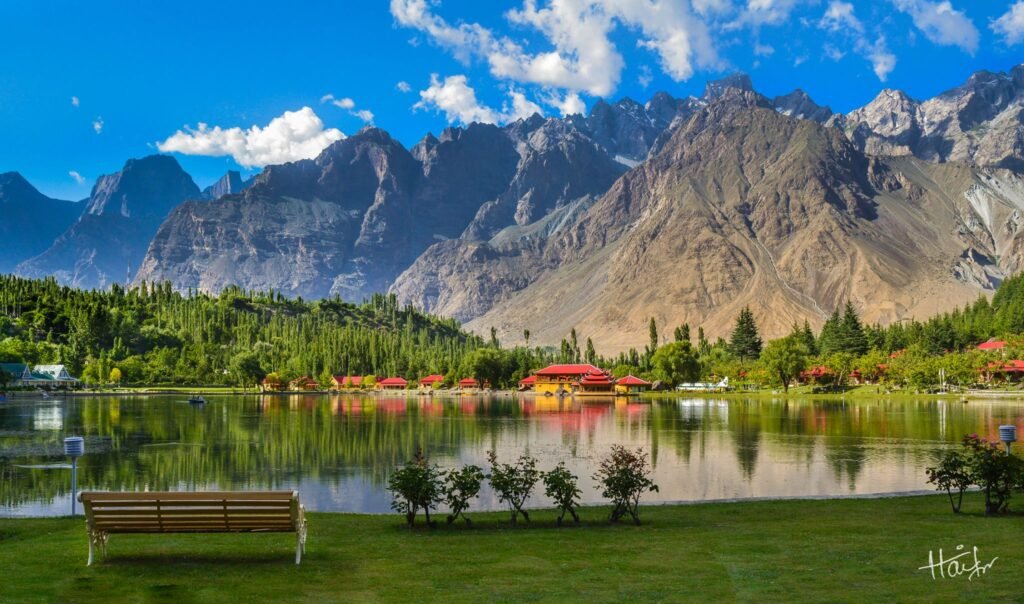
Why is This Wonderland?
Whoever you are? Wherever you belong to? Whatever is your craving in nature? Come to this wonderland. The geographical versatility, in terms of landscape it owns, I have already allured you with in above lines. To behold the cultural diversity and sophistication, that is in abundance in every of its dwellings, settlements, and cities, is an experience par excellence. Every season that descends on the valleys, vales, mountains, trees, forests, shrubs, herbs, streams, rivulets, brooks, falls, and rivers in Gilgit Baltistan, has immense attractions for you to let you feast your eyes, to absorb the feel of the metaphysical caresses on your souls, to fill the satchels of your minds with euphoric memories, though uncountable yet cherishable, to keep your coming days kindled with the reminisces of the moments not spent, but felt and absorbed and inhaled while being in Gilgit Baltistan.
Sumptuous Seasons
Let us have a tour de year. January when comes, it comes with icy winds in the air laden with snowflakes. Nalter feels pride and pleasure in hosting national and international skiing competitions. A gala indeed deserves to be a part of. Cliffs get covered with gleaming ice under the sun and moonlight. And even the moonless night, when stars get closer enough to the earth that you can reach your arms into the sky to fill your hands with them, the white silhouette of snow-clad cliffs take you into the dreamlands.
March marks the arrival of the spring that gets extended to May. The flamboyant and aromatic flowers wild rose, berry, cherry, almond, and apricot magnanimously blossom to greet the guest.
June, July, August, and September are the months of roaring rivers, rapt brooks, lavish lakes, arrogant falls, and lush green meadows. Literally, they fairies, gremlins, elves, and pixies descend on these meadows. That is the real why the emerald pastures are called fairy meadows. This is not just Naltar, or Deosai Plains, or Phander lakes, or Fairy Meadows, or Bagrot Valley, or Babusar Vales, or Hunza Greens, it is everywhere, wherever you head to.
Aah— then here falls the fall. And it is October. And it is November. And it is yet another spring. The spring of the autumn. Spectacular. Picturesque. Arresting. Captivating. Spellcasting. An extravaganza of burning embers glued with the every inch of the twigs of every tree. And if you have not had the experience of living in Gilgit Baltistan in autumn, the objective of your getting birth has not been met so far. Believe me.
And then strikes the great December on the door. Chilly December. Gloomy December. Melancholic December. Desolate December. Trees are bereft of leaves. Streams and rivers are void of waters. Falls are suspended in the air. Lakes are frozen to offer skating and playing and enjoying. And the shoal of trout can be seen frisk and frolic beneath the frozen layer of crystal clear water of Khalti Lake. December is all about shawls, sweaters, overcoats, mufflers, high-necks, pullovers, scarves, coats, jackets, mittens, socks, and what not. The soft aromas of coffee, soup, Qehwa, dry fruits, dry meat, and mutton broth glide in the air. Room warmers become the centre points of the gatherings. Would you like to miss out any of the twelve months of a year?
Archeological Attractions
Archeology always stirs my memories bogged down in my childhood when I would watch Indiana Jones series featuring legendary Sean Connery and manly Harrison Ford. The father-son duo were courageously adventurous to set off dangerous expedition to explore archeological artefacts and in the way atypical stories would pop up. Oh, and how could I forget Dan Brown who has penned a number of thriller mysteries with his marvelous protagonist Professor Robert Langdon? On screen, the role is performed by exalted Tom Hanks. The plot and story of De Vinci Code still haunt me. And how come can the lovers of archeological sites afford to overlook Gilgit Baltistan that is actually the treasure trove of such sites? The scripts inscribed on rocks found in abundance in Gilgit Baltistan offer the curious souls to peep into the past. The great mystical Buddha stupas and his magnificent rock carvings present at the various places are a source of soulful sacred sips for those who intend to have the experience.
Getting back to where I was – Phander
I was on my way to Shandur. I had travelled along the beautiful River Gizer. And I made a stopover in Phander for a night. And the road I traveled on was jumpy and jerky. Unlike KKH. The smooth and sleek. And I was trying to put up at any hotel. And I could not find any equivalent to any that could be found in Gilgit city or along KKH. And this the case almost everywhere in less travelled areas and places. The tourists coming to this place face many a difficulties of these kinds. In Gilgit Baltistan, where, without exaggeration, every nook and corner, and every rock and hill, and every brook and stream offers a reason to stay and see around from tourism point of view. But the sites are unknown, or less known to the world.

Let’s Make Sites Known
As a student of Media and Mass communication, I reckon a lot needs to be done in the pursuits of making the world know about the still hidden sites in Gilgit Baltistan. For the purpose, new age media well and effectively be employed. As has been envisaged by the Prime Minister of Pakistan, Imran Khan, Gilgit Baltistan is teemed with the potential to attract the maximum number of tourists from all around the world. People living in populous pockets of the world are ridden with the physical as well as psychological stress and strain. They have been deprived of uncontaminated resources, moments of leisure, and peace of mind. The unending and tiring race of cosmopolitan corporate culture has given way to materialism that is eroding the societal bonds and limiting humans’ relationship with their own selves. Getting closer to nature lets them grab an opportunity to establish intrapersonal and extra-personal dialogues, that further let them escalate their spiritual cognizance. To facilitate them in this venture, we will have to be good hosts by taking care of their possible needs and requirements while they are up to cultivating their connection with nature. Just by making things presentable, and providing the state-of-the-art services to their tourists countries like New Zealand, France, Italy, Egypt, Malaysia, Central Asian States, and even countries Nepal, India, and Maldives are successful in attracting million and millions of tourists every year. These countries make their places must-see in the eyes of travelers by selling their sites through the smart and intelligent use of media and movies. The stories and screenplays are conceived and developed with a purpose to maximum expose their visible and non-visible culture that include their heritage, religion, customs, festivals, and cuisines. They knit and knead their stories in their deserts, jungles, mountains, rivers, plains, and oceans. And all is done under the presence and patronage of their respective ministries of culture, tourism, and heritage with the consultation of men of mind, letter, and pen. The need of the hour is to take concrete and constructive measures in this direction. Let me quote myself, even three years after my coming to Gilgit, I hardly knew about the names of the sites situated along River Gizer. The same is with other in and out-country tourists. By the virtue of residing in Gilgit, many a family and official friends have so far dropped into me. The only craving they all have is to visit the places which have been popular owing to be on KKH. Off the KKH are the places very less known to them. That is why the concentration of the tourists does not scatter to the other sides and corners of Gilgit Baltistan. Let’s make these less visited and travelled to place known to the world through conventional as well as non-conventional media.
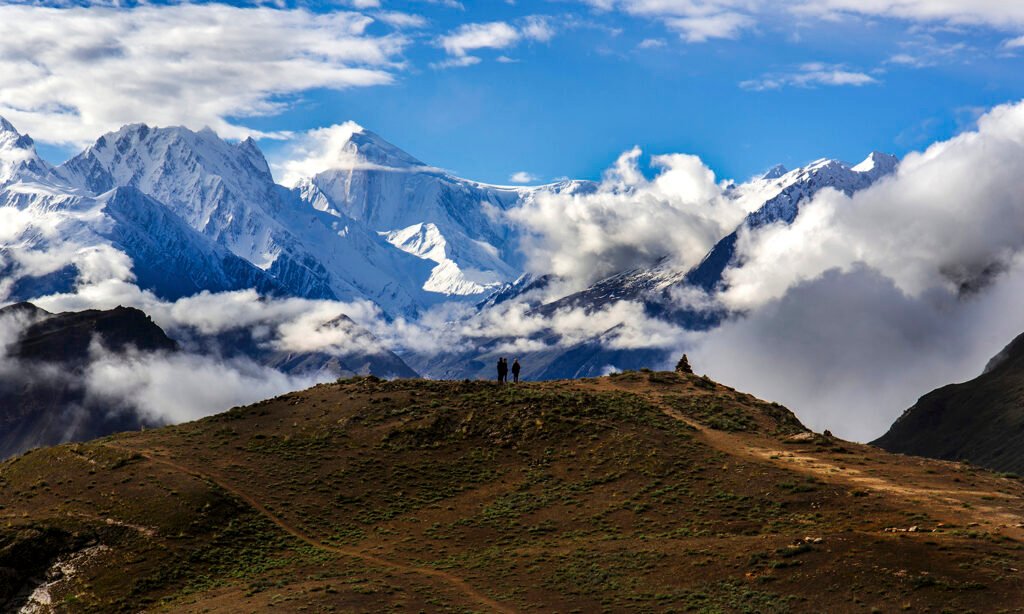
Let’s Have Hotels of International Standards
Talking to a person related to hotel industry in Gilgit revealed that the process of hotel and guest house registration has only very recently been initiated. Let alone to assure the standards these hotels are equipped with to offer their customers. In all the country in general, and in Northern and mountainous area, regrettably there is no intervention of any quality assurance body set by government, neither provincial, nor federal that could see through and certify the rates, services and food these restaurants and hotels are providing to their tenants. The developed countries have very strong and strict mechanism of regulatory bodies which are responsible to evaluate such matters. The market players falling short of the standards set by these bodies are warned, fined, and ultimately kicked out of the market. The sorry state of affairs is lamentably prevalent in our country.
Next to the standards of the hotels, is the availability of the sufficient rooms in the area that could sufficiently accommodate the influx of the visitors, especially in the peak season that is between May and October. The construction of new hotels needs to be encouraged. For the purpose, soft loans may be sanctioned to the eager ones who intend to enter the hoteling business. A very efficient, competent, and vigilant eye is needed to inspect the process of the construction of the buildings so that they may not violate the rules and regulations of the building of such buildings. Prior to the initiation of the process, a set of strict yet suitable rules for the builders must be reached at and agreed upon so that the natural assets and attractions, which are the only points of getting drawn to this area may not be put at stake.
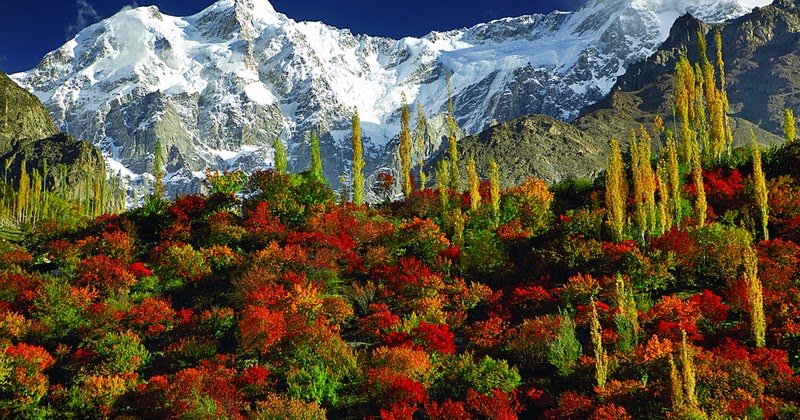
Let’s Have Paths and Pavements
While typing these lines, Mustafa Zaidi just resounded in my mind. He said,
انہی پتھروں پہ چل کے ۔۔۔ اگر آ سکو ۔۔ تو آ ؤ ۔۔۔
میرے ۔۔۔ گھر کے راستے میں ۔۔۔ کوئی کہکشاں نہیں ہے ۔۔۔
(Come — if you intend to come — only by treading on these sharp stones —
As — in the way to my abode — there is no milky way —)
Though the things have much been improved as far as the construction of roads leading to off-the-road places are concerned, yet many express ways, roads, and link roads are waiting for their construction, mending, and carpeting. Gilgit to Skardu via Astor and Deosai plains, interior Baltistan inter valley roads and link roads, Nalter Express Way, Gilgit-Chitral Highway, KKH Shimshal Road, KKH Chipursan Road, Ghahkuch-Ishkoman Valley Road, and many more are yet either to be planned, constructed, expedited, or mended. The provision of basic necessities like edibles, water closets, and fuel stations will help attract the tourists.
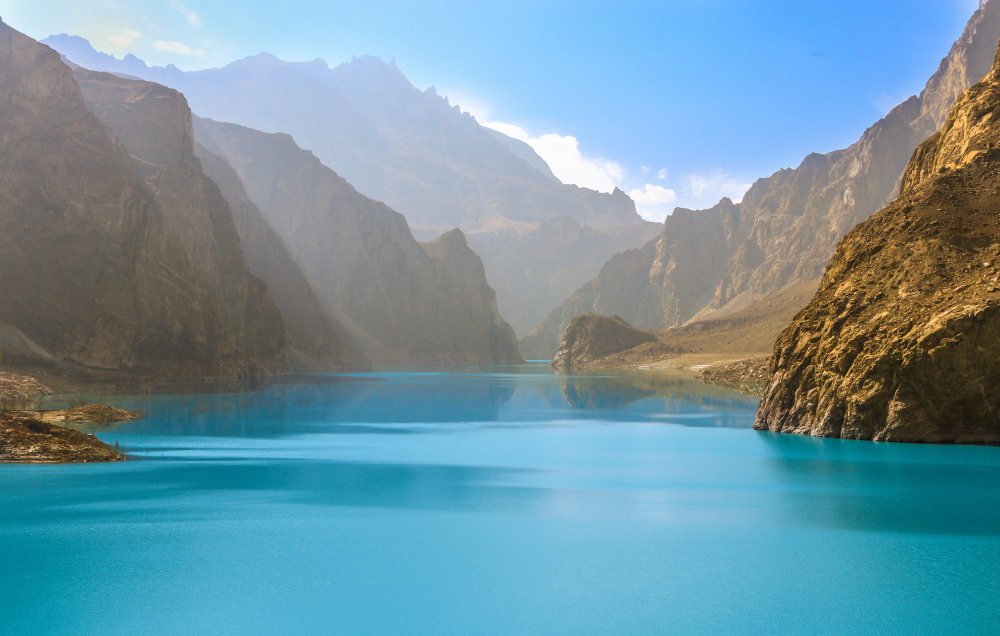
They say, seeing is believing. I insist all those who are running their eyes on these lines, believe first, and then see. You will not be disappointed. You will enjoy the experience rather. Believe me.
About Author
Dr. Ahmer Sohail Basraa
The writer is the Station Director at Radio Pakistan, Gilgit, and also visiting faculty at the Department of Media & Communication, Karakoram International University, Gilgit.
You may like
-
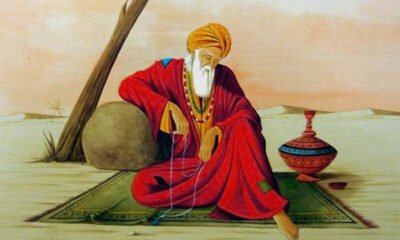

Rumi, the Moral Psychologist
-


Poor Winter Maintenance of KKH Risks CPEC All-Weather Trade
-
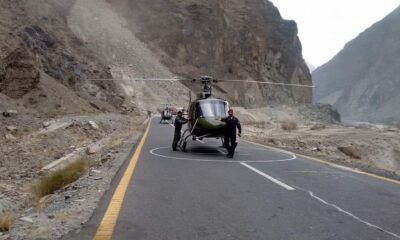

Pakistan Army Launches Rescue Operation, Missing Passengers in Deosai Found Safe
-
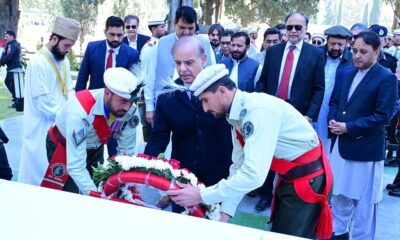

PM Shehbaz Sharif Visits Gilgit-Baltistan, Honors Martyrs, and Launches Development Projects
-
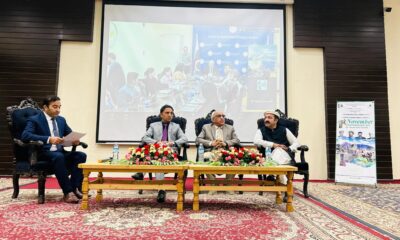

CISS-KIU Seminar: A Tribute to Gilgit-Baltistan’s Freedom Fighters of 1947
-


Gilgit-Baltistan Marks 77th Liberation Day from Dogra Rule
Arts, Culture & Heritage
Exploring Baltit Fort: A Jewel of Hunza Valley
Published
1 year agoon
October 10, 2024By
Zeeshan Alam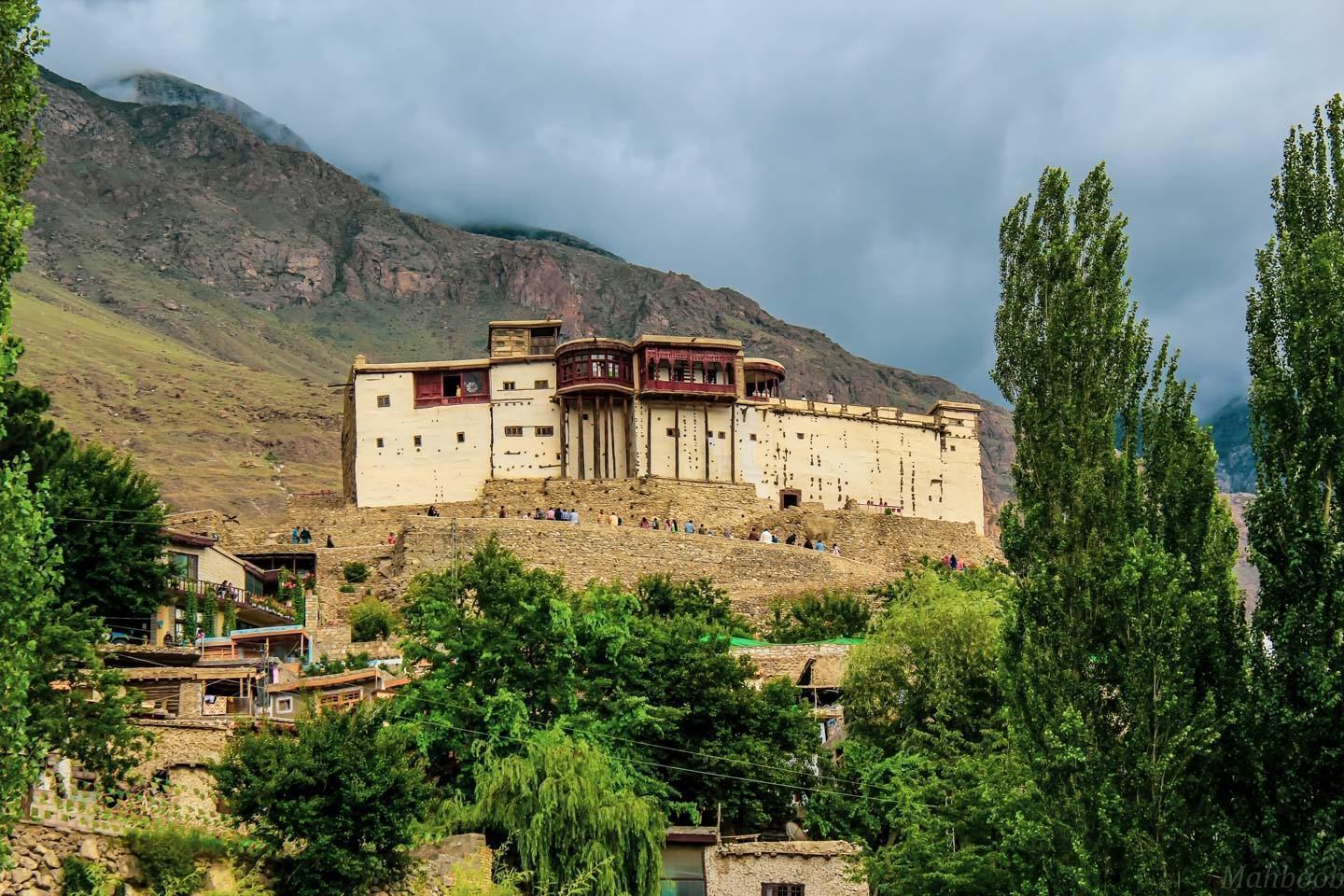
Nestled in the heart of Pakistan’s breathtaking Hunza Valley, Baltit Fort is a testament to the region’s rich history and cultural heritage. This stunning fort, with its majestic wooden architecture and panoramic views, offers visitors a unique glimpse into the past while providing a gateway to the natural beauty of the surrounding landscape.
A Glimpse into History
Baltit Fort dates back over 700 years, originally built as a defensive structure to protect the local population. It was the residence of the ruling Mirs of Hunza until the mid-20th century. The fort’s design showcases a blend of Tibetan and Central Asian influences, reflecting the diverse cultural tapestry of the region. In 1993, it underwent extensive restoration, making it a significant site for history enthusiasts and casual visitors.
Architectural Marvel
As you approach the fort, you’ll be captivated by its distinctive architecture. The intricate wooden balconies, colorful frescoes, and robust stone walls create a striking visual appeal. The fort is built on a hillside, which adds to its charm and offers stunning views of the surrounding peaks, valleys, and the picturesque Hunza River.
A Journey Through Time
Once inside, you can explore various rooms and halls that were once occupied by the ruling family. The museum within the fort showcases artifacts, traditional clothing, and tools used by the locals, providing a deeper understanding of the region’s heritage. Each room tells a story, making your visit a journey through time.
Breathtaking Views
One of the highlights of visiting Baltit Fort is the breathtaking panoramic views it offers. The fort overlooks the vibrant landscapes of Hunza Valley, with terraced fields, orchards, and the majestic Rakaposhi and Ultar Sar mountains in the background. Be sure to bring your camera; the vistas are simply unforgettable.
Cultural Significance
Baltit Fort is not just a historical site; it is a cultural hub for the community. Throughout the year, various cultural events and festivals are held here, showcasing local music, dance, and art. Engaging with the local people and participating in these events can enrich your experience and provide insight into the traditions of the Hunza Valley.
Tips for Visiting
- Best Time to Visit: The ideal time to explore Baltit Fort is from April to October, when the weather is pleasant, and the landscape is lush and vibrant.
- Getting There: The fort is easily accessible from Karimabad, the main town in Hunza. You can either hike up the hill or take a short drive.
- Guided Tours: Consider hiring a local guide who can provide in-depth knowledge about the fort’s history and significance.
Conclusion
Baltit Fort is more than just an ancient structure; it is a symbol of the enduring spirit of the Hunza Valley. Its historical significance, architectural beauty, and stunning natural surroundings make it a must-visit destination for travelers exploring Pakistan. Whether you’re a history buff, a photography enthusiast, or simply seeking to connect with nature, a visit to Baltit Fort will leave you with lasting memories and a deeper appreciation for this enchanting region. So pack your bags and embark on a journey to this extraordinary fort—you won’t be disappointed!
About Author
Zeeshan Alam
The writer is a co-founder of Grey Matter Ventures. He works as an account manager, helping to build strong client relationships. In his free time, he enjoys freelance work and graphic design. He is also passionate about social work and spends time helping his community.
Arts, Culture & Heritage
Altit Fort Hunza: A Must-Visit Destination in Pakistan
Published
1 year agoon
October 7, 2024By
Zeeshan Alam
Altit Fort Hunza is a hidden gem in the heart of the Hunza Valley, Pakistan. This ancient fortress, dating back to the 11th century, offers a captivating blend of history, architecture, and natural beauty.
This is an ancient fort in the Altit town in the Hunza valley in Gilgit Baltistan, Pakistan. It was originally home to the hereditary rulers of the Hunza state who carried the title of ‘Mir‘, although they moved to the somewhat younger Baltit fort nearby three centuries later. The Fort and in particular the Shikari tower is around 1100 years old, which makes it the oldest monument in the Gilgit–Baltistan. The fort has received the UNESCO Asia Pacific Heritage Award for Cultural Heritage Conservation in 2011.

Why visit Altit Fort Hunza?
- Historical Significance: As one of the oldest surviving monuments in the Hunza Valley, Altit Fort provides a glimpse into the region’s rich past.
- Architectural Marvel: The fort’s intricate woodwork, carved balconies, and beautiful murals are a testament to the craftsmanship of its builders.
- Panoramic Views: Perched on a hilltop, Altit Fort offers breathtaking vistas of the Hunza Valley and surrounding mountains.
- Cultural Experience: The fort serves as a museum, showcasing artifacts and traditions of the Hunza people.
- UNESCO World Heritage Site: Its recognition as a UNESCO World Heritage Site highlights its cultural and historical importance.
Tips for Visiting:
Best Time to Visit: Spring (March-May) and autumn (September-November) offer the most pleasant weather for visiting.
How to Get There: You can reach Altit Fort by trekking from Karimabad or hiring a taxi.
Entrance Fee: There is a small entrance fee to enter the fort.
Things to Do: Explore the fort’s chambers, visit the museum, and enjoy the panoramic views.
Don’t Forget: Bring a camera to capture the stunning scenery and architecture.
Here are some additional photos:


This fort is a must-visit destination for anyone traveling to Pakistan. Its historical significance, architectural beauty, and cultural richness make it a truly unforgettable experience.
About Author
Zeeshan Alam
The writer is a co-founder of Grey Matter Ventures. He works as an account manager, helping to build strong client relationships. In his free time, he enjoys freelance work and graphic design. He is also passionate about social work and spends time helping his community.
Tourism
Panel Discussion on Community-Centric Tourism in Hunza on World Tourism Day
Published
1 year agoon
September 27, 2024By
Imran Ali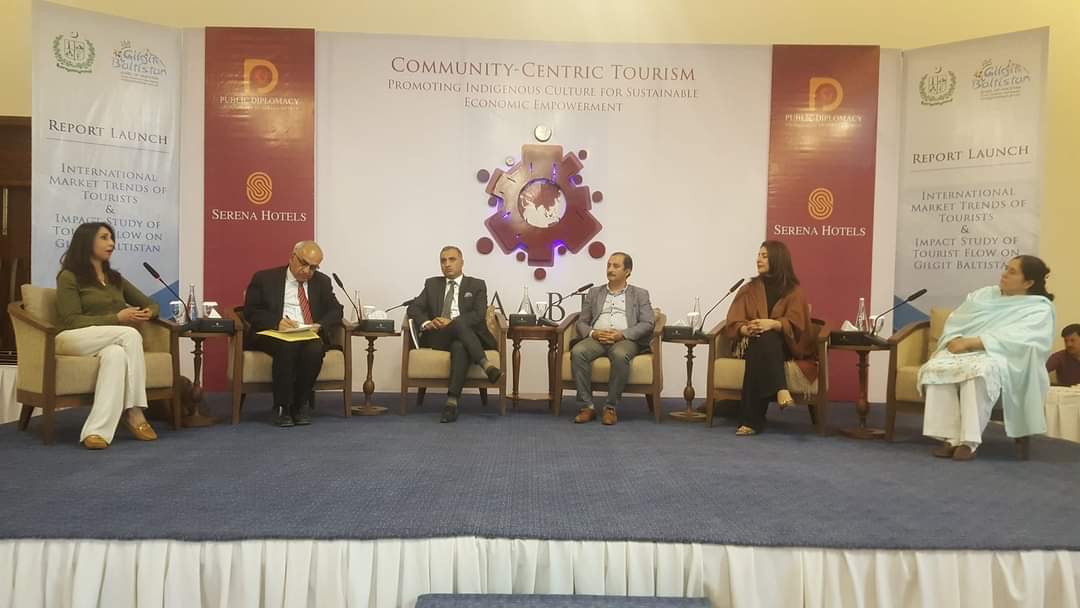
On World Tourism Day 2024, a significant panel discussion was held in Hunza, Gilgit-Baltistan, to explore the potential of community-centric tourism as a driver for sustainable economic development and cultural preservation. Experts, government officials, and industry leaders convened to discuss strategies for empowering local communities through tourism initiatives.
A significant panel discussion titled “Community-Centric Tourism: Promoting Indigenous Culture for Sustainable Economic Empowerment” was held at Serena Hotel, Hunza. The event brought together experts, government officials, and industry leaders to explore how community-centric tourism can preserve cultural heritage and foster sustainable economic empowerment in Gilgit-Baltistan.
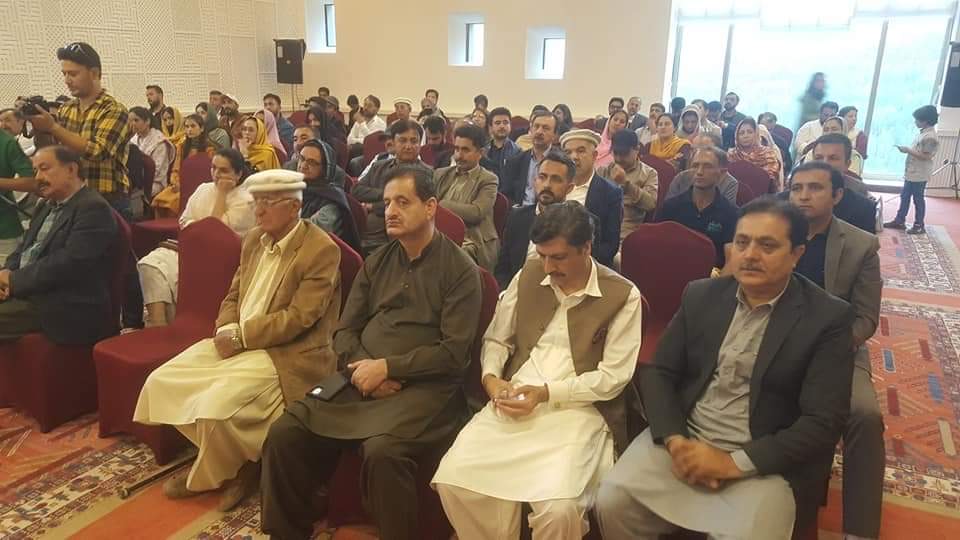
The discussion highlighted the potential of local traditions and crafts as tourism drivers, helping to preserve Indigenous culture while creating economic opportunities for local communities. Lal Bano, one of the panelists and Manager of Karighar, highlighted how community-focused initiatives empower local artisans, especially women, by providing platforms to showcase their crafts and preserve traditional skills. Her insights emphasized the vital role these programs play in fostering economic independence and cultural preservation.
Zameer Abbas, Secretary of Tourism, Sports & Culture, Gilgit-Baltistan, emphasized the government’s role in supporting sustainable tourism, outlining initiatives that encourage cultural preservation while boosting tourism opportunities. He stressed the importance of public-private partnerships to ensure long-term benefits for local communities.
The event also focused on the challenges of promoting sustainable tourism in mountain regions. Raja Ali Anwar Khan, General Secretary of the Gilgit Baltistan Association of Tour Operators, offered insights into responsible tourism practices that protect the environment and benefit local populations economically.
Prof. Dr. Attaullah Shah, Vice Chancellor of Karakoram International University, added academic perspectives, emphasizing the role of education in promoting sustainable tourism models that balance environmental, cultural, and economic goals. His input underscored the need for a well-rounded approach to tourism development in the region. The panel discussion concluded with several key takeaways, including the need to preserve indigenous culture as a core tourism component and strategies to empower local communities through tourism-related opportunities.
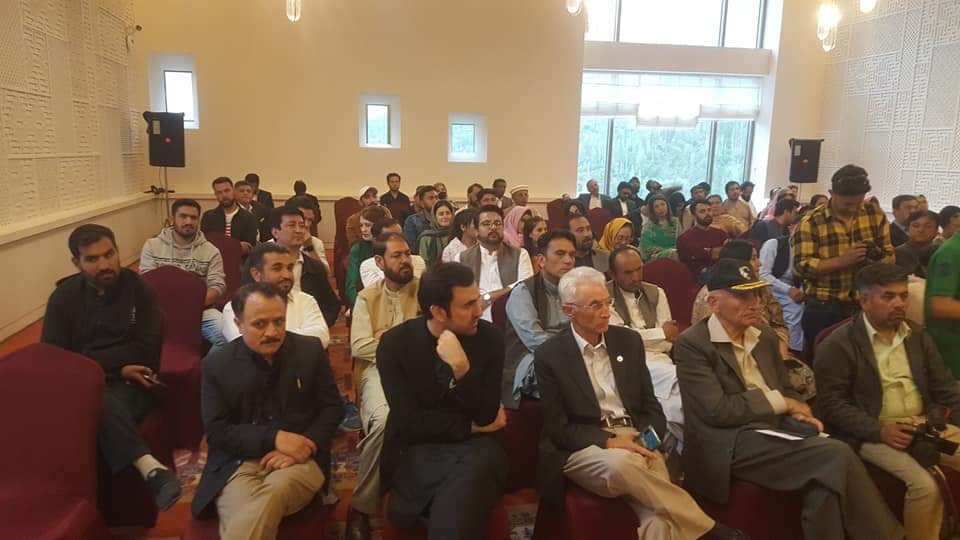
Recommendations were made for stronger collaborations between the government, the private sector, and local communities to support sustainable tourism practices in Gilgit-Baltistan. By focusing on local communities, promoting indigenous culture, and adopting responsible practices, tourism can contribute to the region’s long-term prosperity.
About Author
Imran Ali
The writer is the Founder & CEO of The Karakoram Magazine. Additionally, he is a nuclear scholar fellow at the Centre for Security Strategy and Policy Research (CSSPR) and can be reached at aleee.imran@gmail.com.

Muhammad Azeem Khan: Pakistan’s Number One Amateur Featherweight MMA Fighter

A Drop for a Click: The Silent Cost of Our Digital Thirst

10 Places to Visit in Hunza – Stunning Natural Wonders You Can’t Miss
Latest
-

 Tourism3 years ago
Tourism3 years ago15 Best Places to Visit in Skardu
-

 Arts, Culture & Heritage2 years ago
Arts, Culture & Heritage2 years agoTraditional women’s dresses of Gilgit-Baltistan
-

 Tourism3 years ago
Tourism3 years agoThe Ultimate Travel Guide to Gilgit-Baltistan: Land of the Mighty Mountains
-

 KIU Corner2 years ago
KIU Corner2 years agoA Guide to LMS KIU Student Login – KIU
-
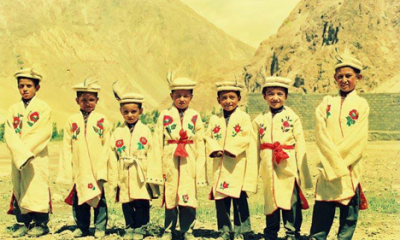
 Arts, Culture & Heritage2 years ago
Arts, Culture & Heritage2 years agoShuqa Simple but amazing winter clothing of Gilgit-Baltistan
-

 KIU Corner2 years ago
KIU Corner2 years agoEmbracing Challenges: Gul Rukhsar’s Remarkable Journey
-

 Opinion3 years ago
Opinion3 years agoThe Constitution of Pakistan: 50 Years of History, Significance, and Challenges
-

 Arts, Culture & Heritage3 years ago
Arts, Culture & Heritage3 years agoQuroot: A Nutritious and Flavorful Staple of Gilgit-Baltistan’s Cuisine


